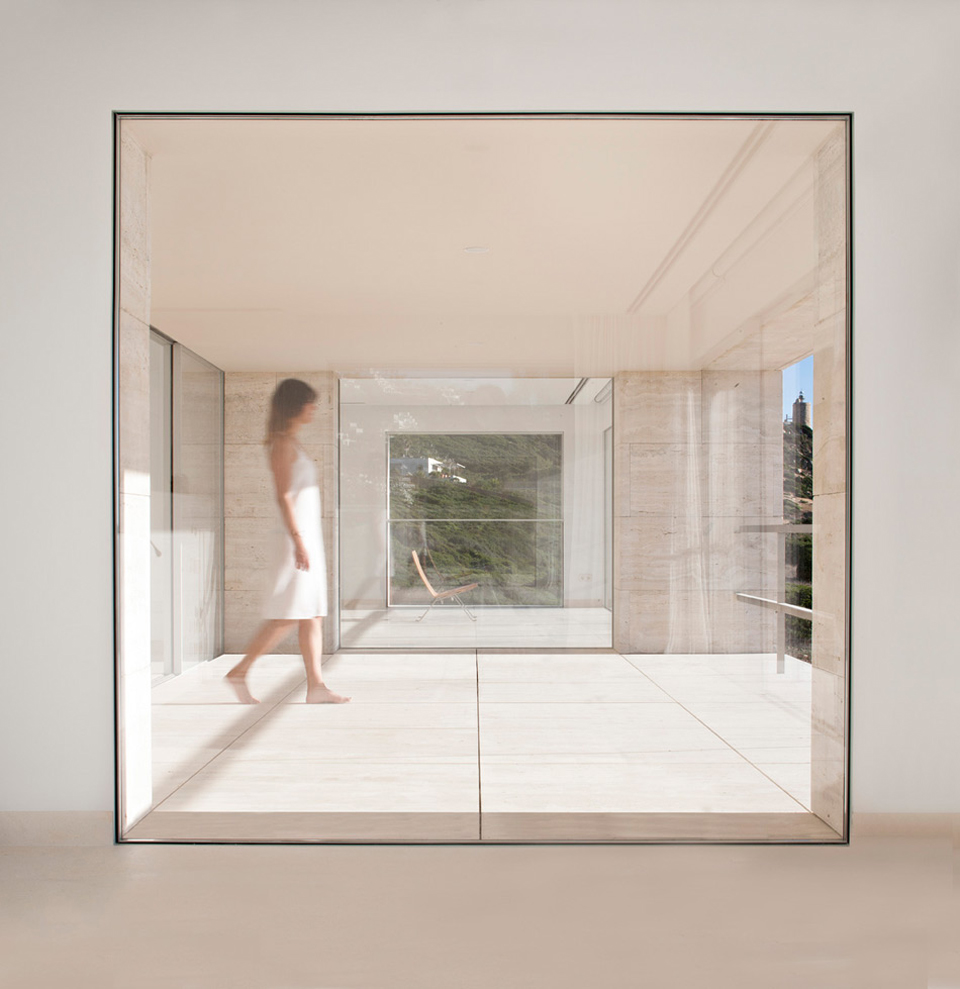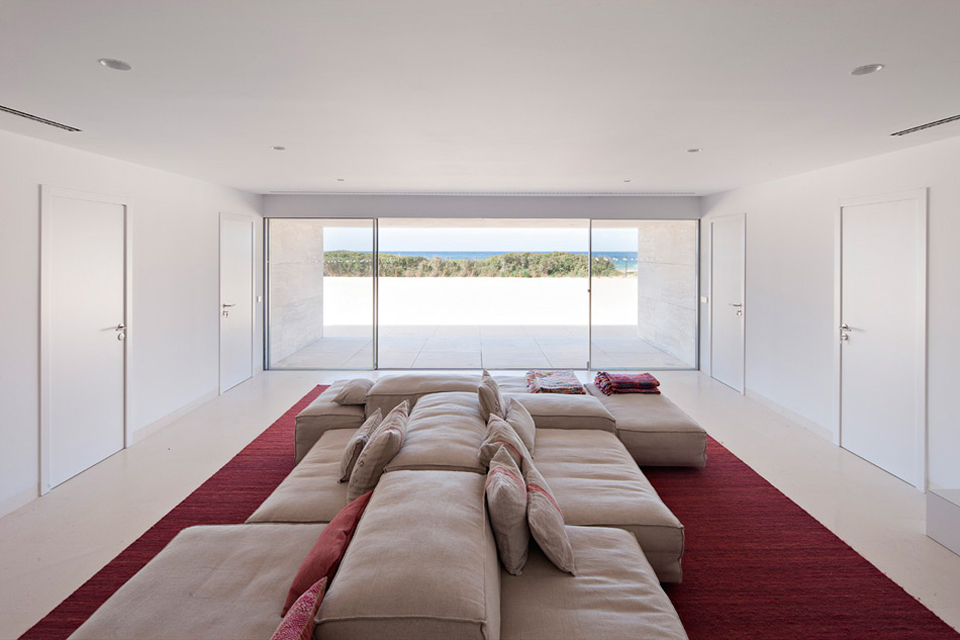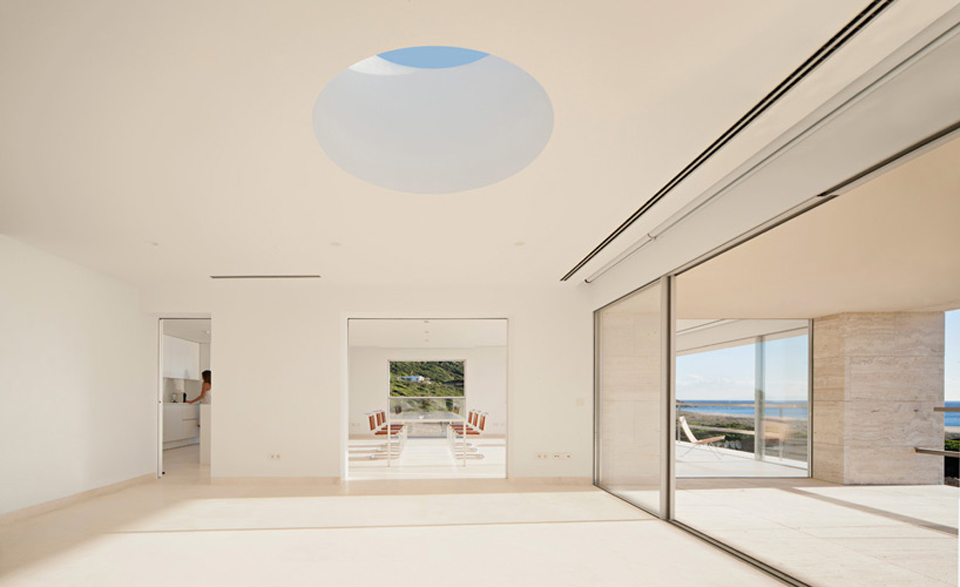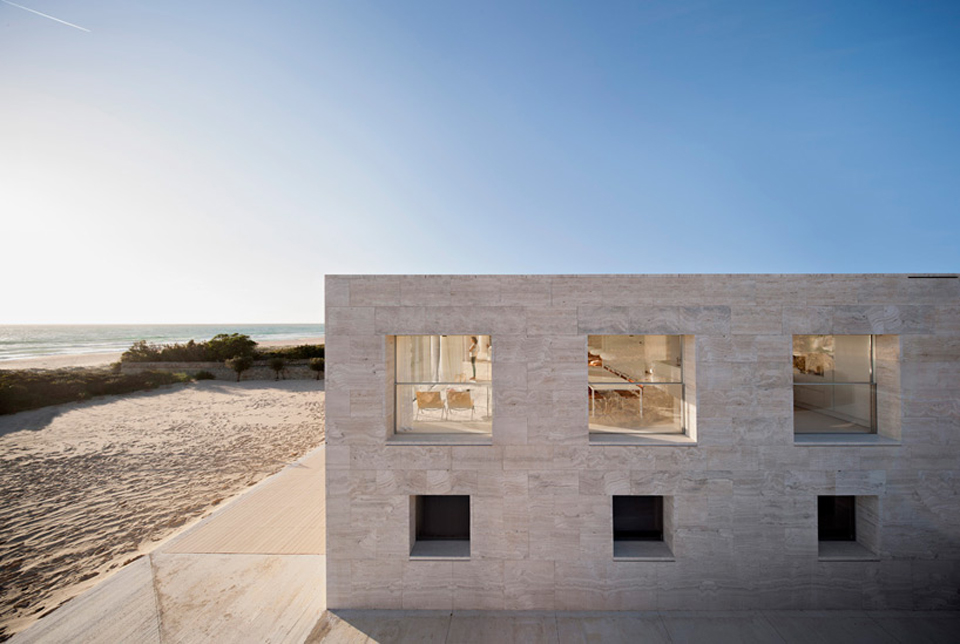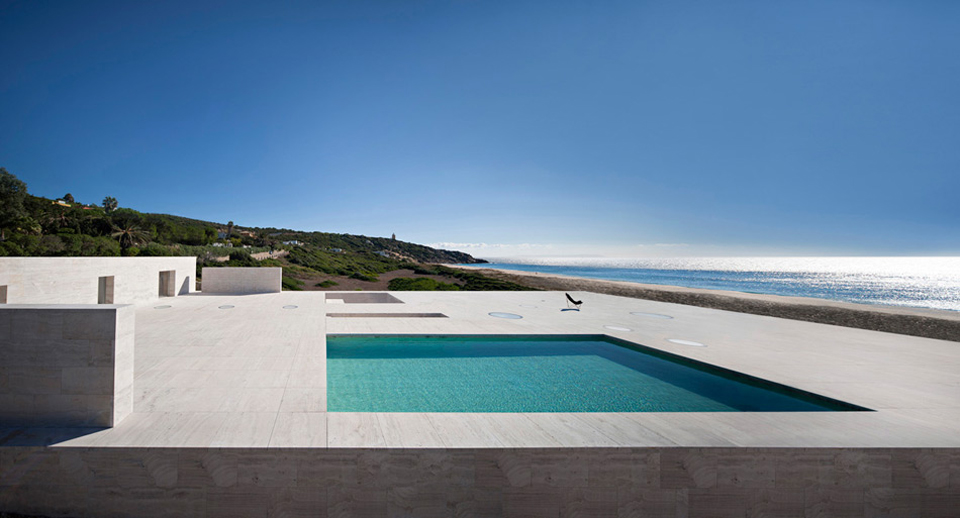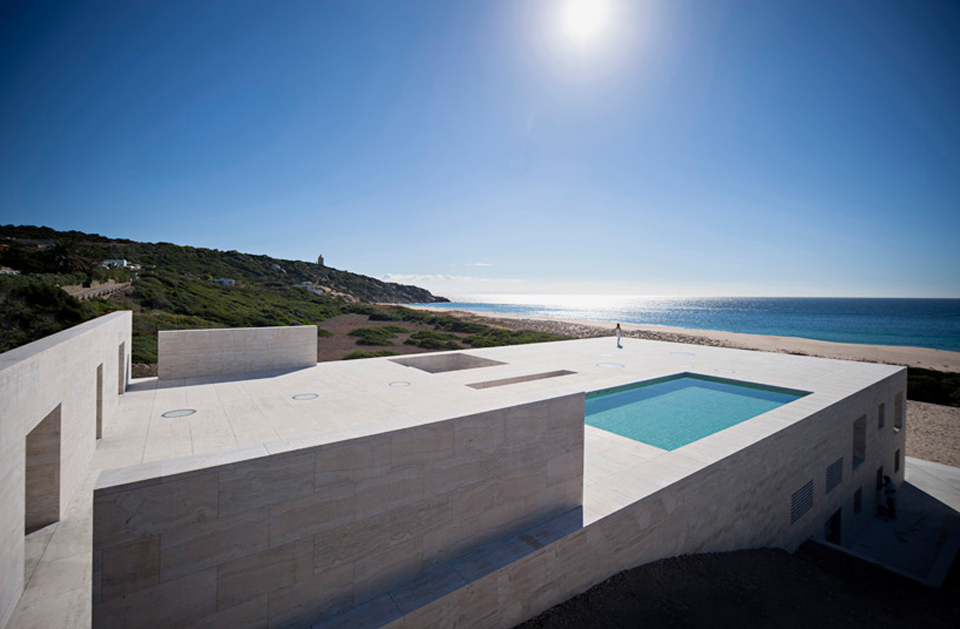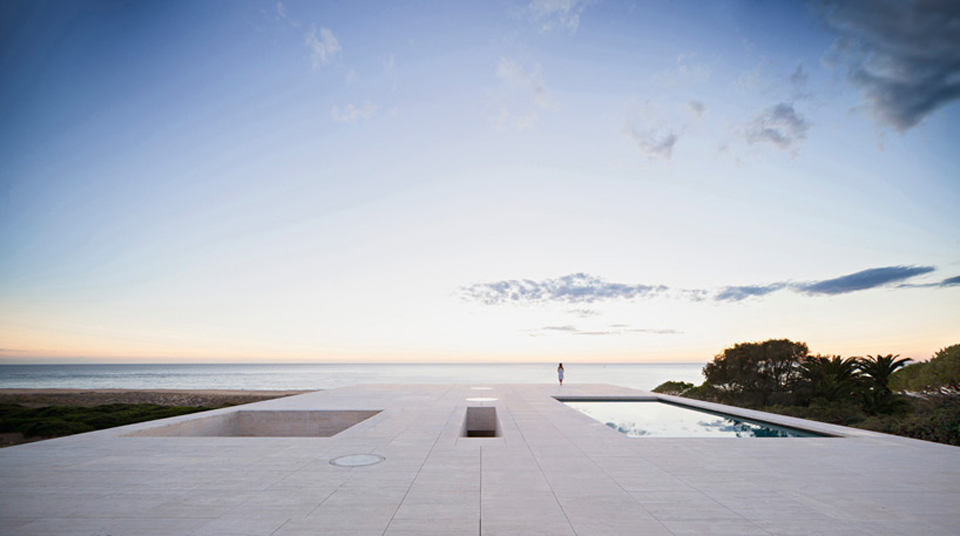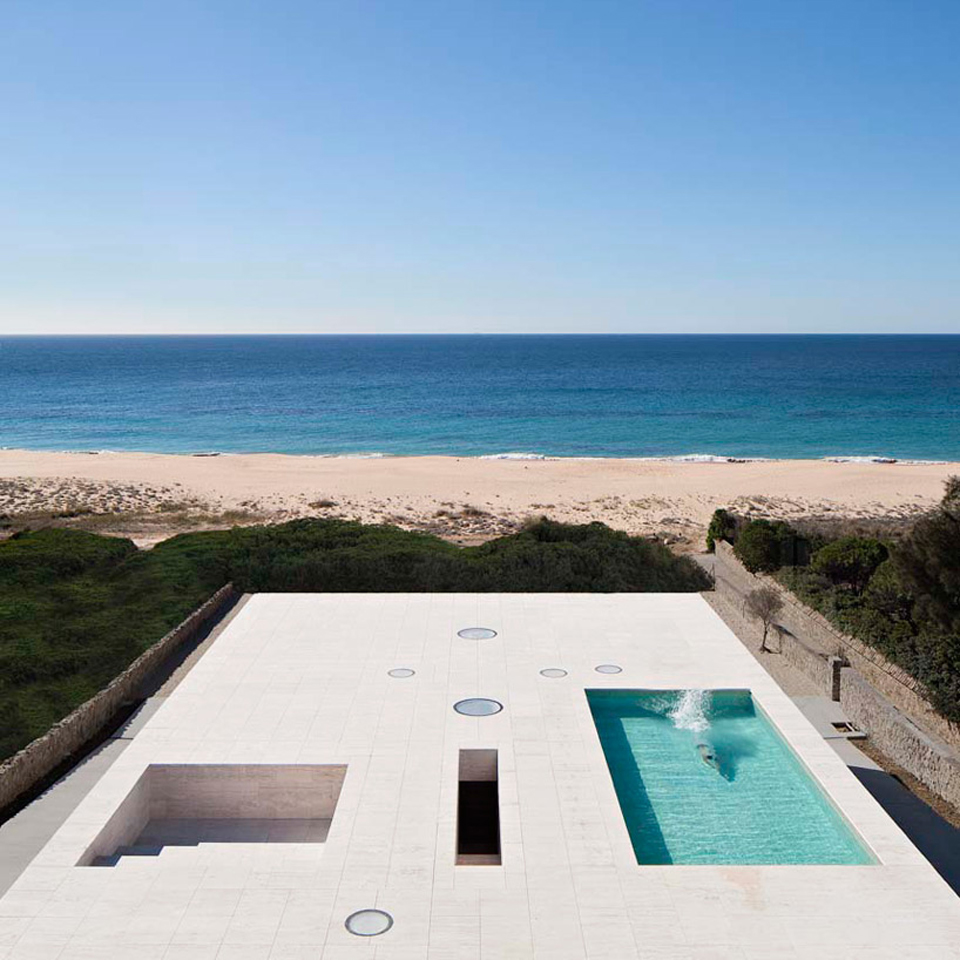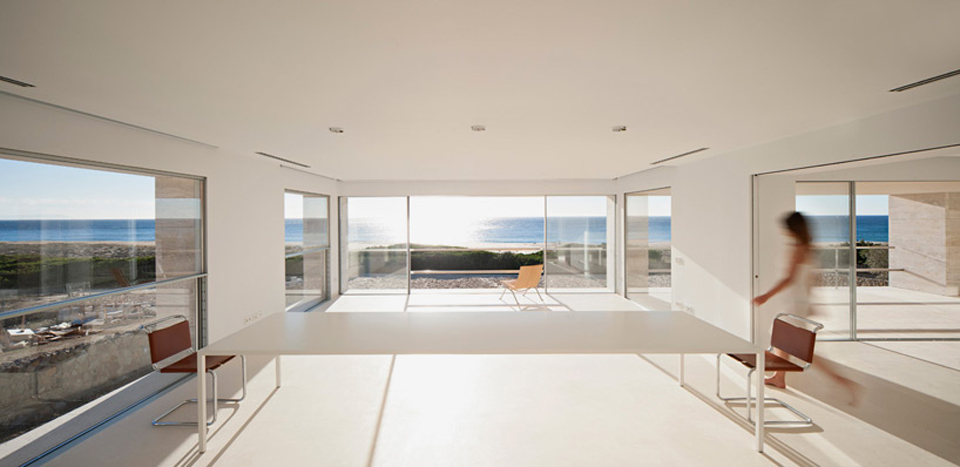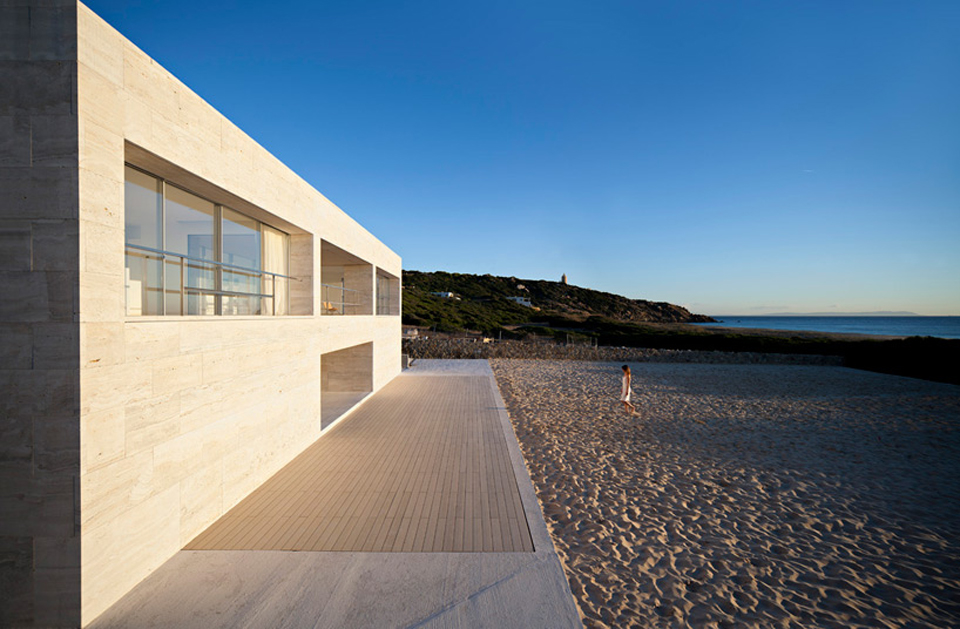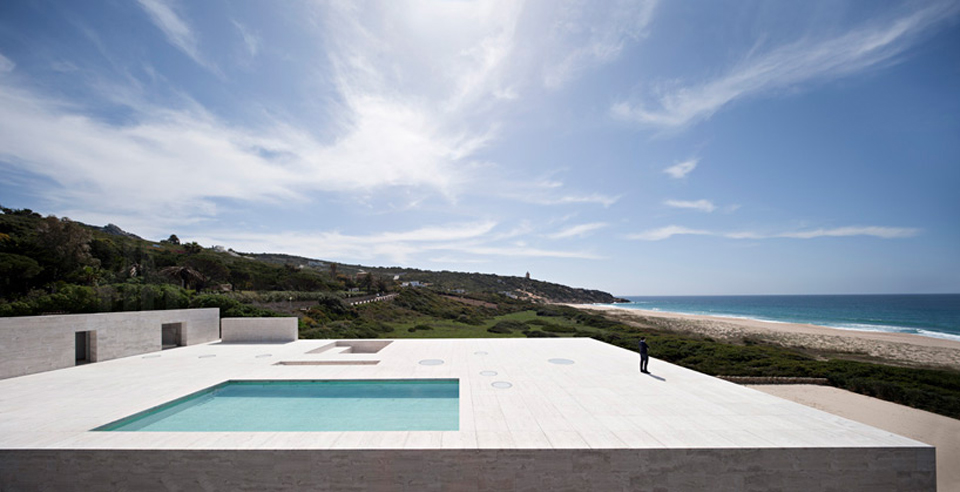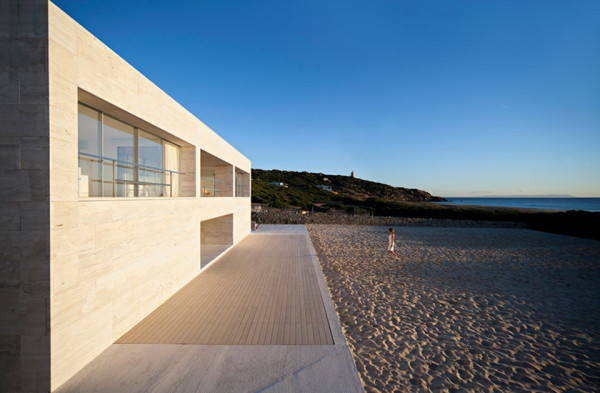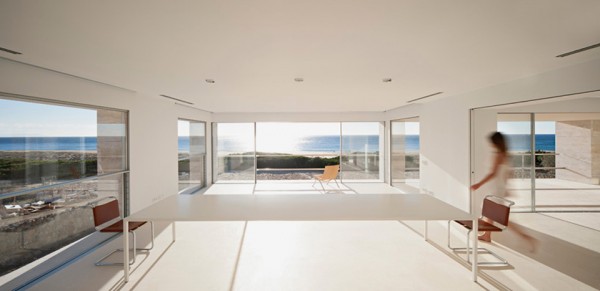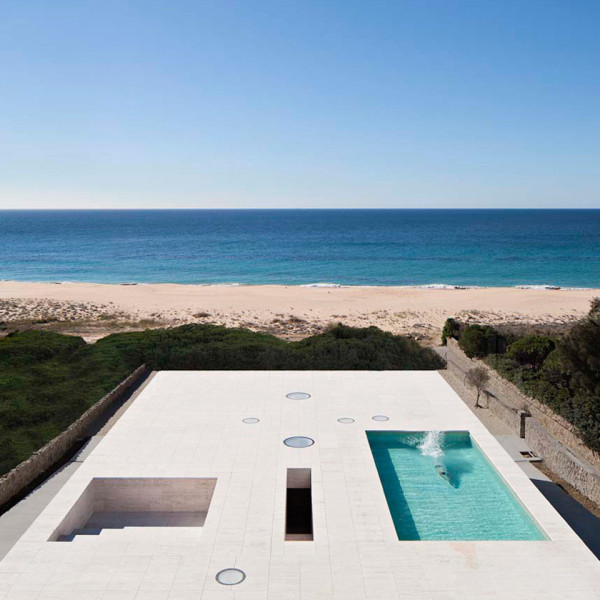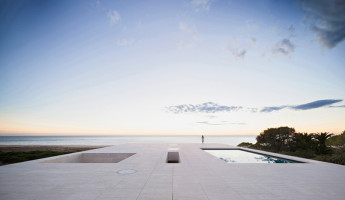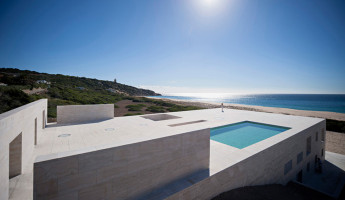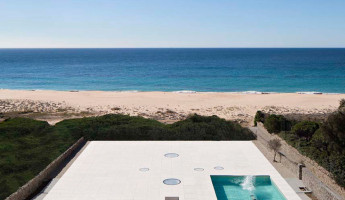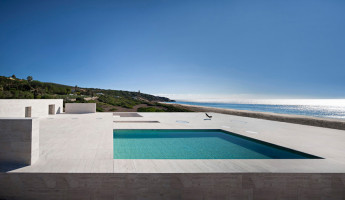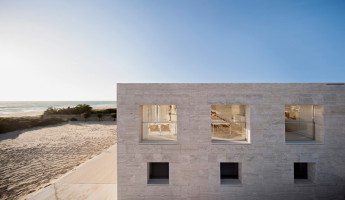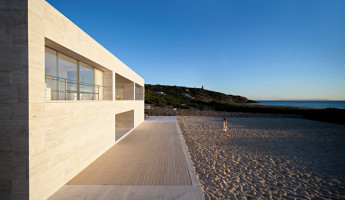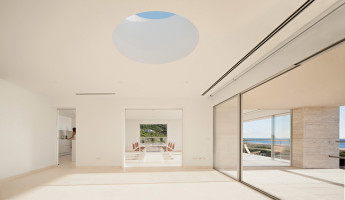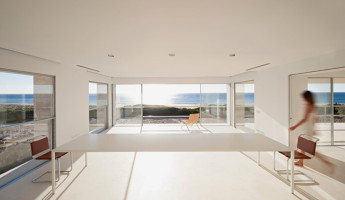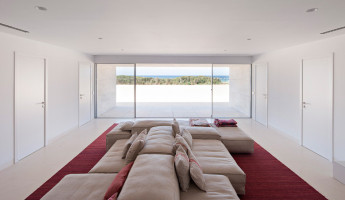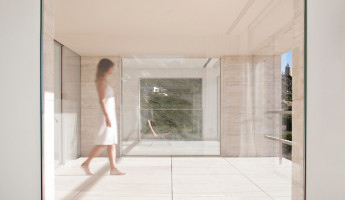Built as a huge rectangular box that measures 20 metres wide by 36 metres deep, the rooftop terrace hides another two-storeys below, one of which extends onto the beach, and another that was built into the rocks behind the house. The use of travertine stone was a subtle way to reference the Roman heritage of the local area. “The Romans were there a handful of centuries ago,” explains the architect. “In their honour we have built our house, like an acropolis in stone, in Roman travertine.” On the roof, there is a sunken swimming pool, stunning views of the ocean, and a hidden staircase that connects to the upper level of the building. This particular floor was designed for socializing, which is why there’s a large living room with a circular skylight, and a covered balcony out the front. Down another level, there are a series of en-suite bedrooms that run along either side of a central corridor that leads right out onto the beach. [photography by Javier Callejas]
House of the Infinite by Alberto Campo Baeza | Gallery
